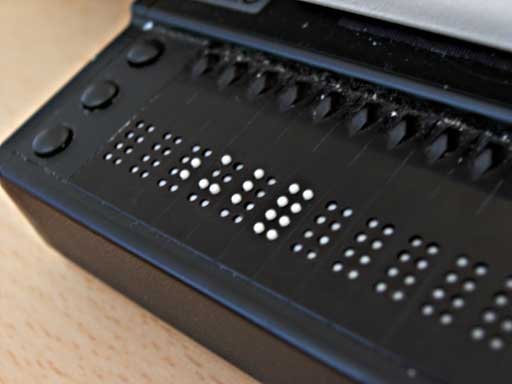
The World Health Organization (WHO) has published a…
Blog
World Braille Day
Tomorrow, January 4, is World Braille Day, the date on which its inventor, the Frenchman Louis Braille, was born.
Braille opened the doors to the literacy of blind people and did so when he was very young, specifically at 16 years old.
Braille is an alphabet (not a language) that allows you to write letters, mathematical symbols, musical notes, and so on. Through cells with 6 confined points that form all these possibilities. Two columns of 3 dots each (as if they were the number 6 on a dice) allow 64 combinations.
This is the basis of the so-called integral Braille but for about 25 years there is computerized Braille that contains 8 dots per cell and allows combinations to be made that correspond to the ASCII symbols.
Braille You can read with your fingers, but today you can write with a variety of methods.
Two centuries ago, when it was invented, the only way was through a punch. Later, various types of typewriters emerged, and today there are Braille printers that can be connected to computers.
There are also devices such as the so-called Braille Lines that, connected to mobile phones, PCs, tablets, etc. They allow you to read what appears on the screen. Some are very small and can be carried anywhere, (10 characters) and others are much larger and are designed to be placed on a table (80 characters).
Mechanically, the Braille line shows the text or information on the screen of the device being used. the dots go up and down making each line of text appear and disappear.
The two blind people who work at TOTHOMweb use, in addition to a screen reader program that verbalizes, in a synthetic voice, what the computer shows, a Braille line each that allows them to read (and not just listen) for example the programming codes or the texts of the reports they write.
Although in some cases and countries the knowledge of Braille has stopped being promoted because many blind people use synthetic voices that read books, websites, etc. It has been found that this is not a good option as it undermines the reading perception of users and their ability to compete, even in the world of work, because, for example, they have no spelling knowledge.
Also, the lack of Braille literacy also causes problems when it comes to learning new languages, studying math, and so on.
In this document, the Catalan Association for the Integration of the Blind explains why Braille and tecnology they must coexist as they are complementary and non-exclusive resources.
Finally, for deafblind people, Braille is the only way to access information from many devices such as mobile phones and computers.

maria.cortes

The World Health Organization (WHO) has published a…

The World Health Organization (WHO) has published a…

The World Health Organization (WHO) has published a…
Segons l'informe publicat aquest passat Desembre per la International Telecommunication Union (ITU), la agència de les Nacions Unides especialitzada en informació i tecnologies de la…